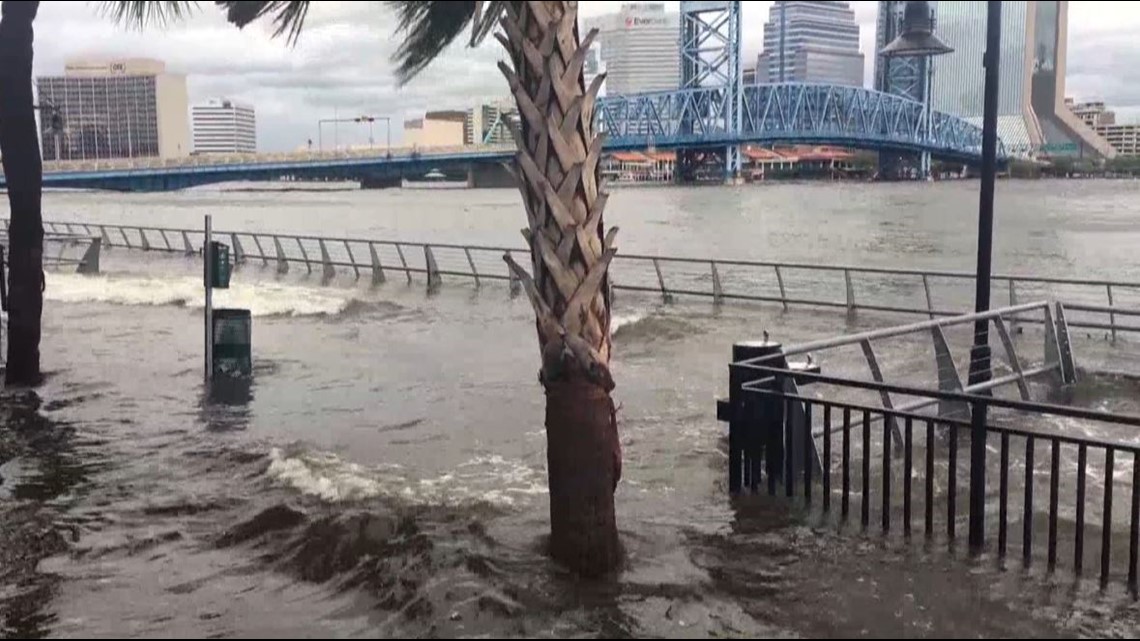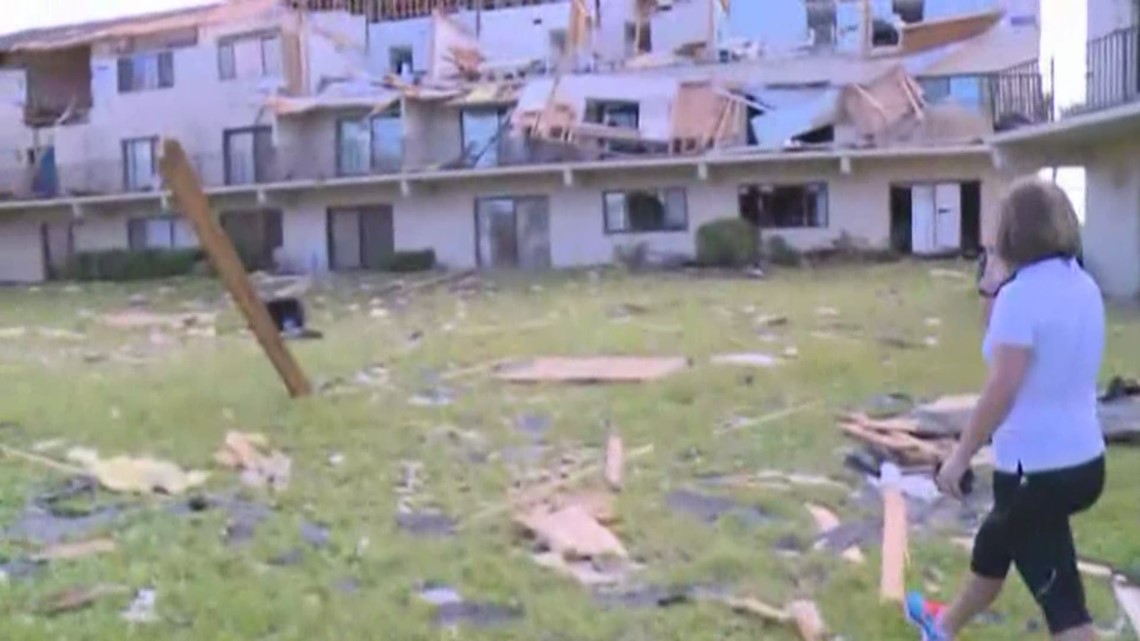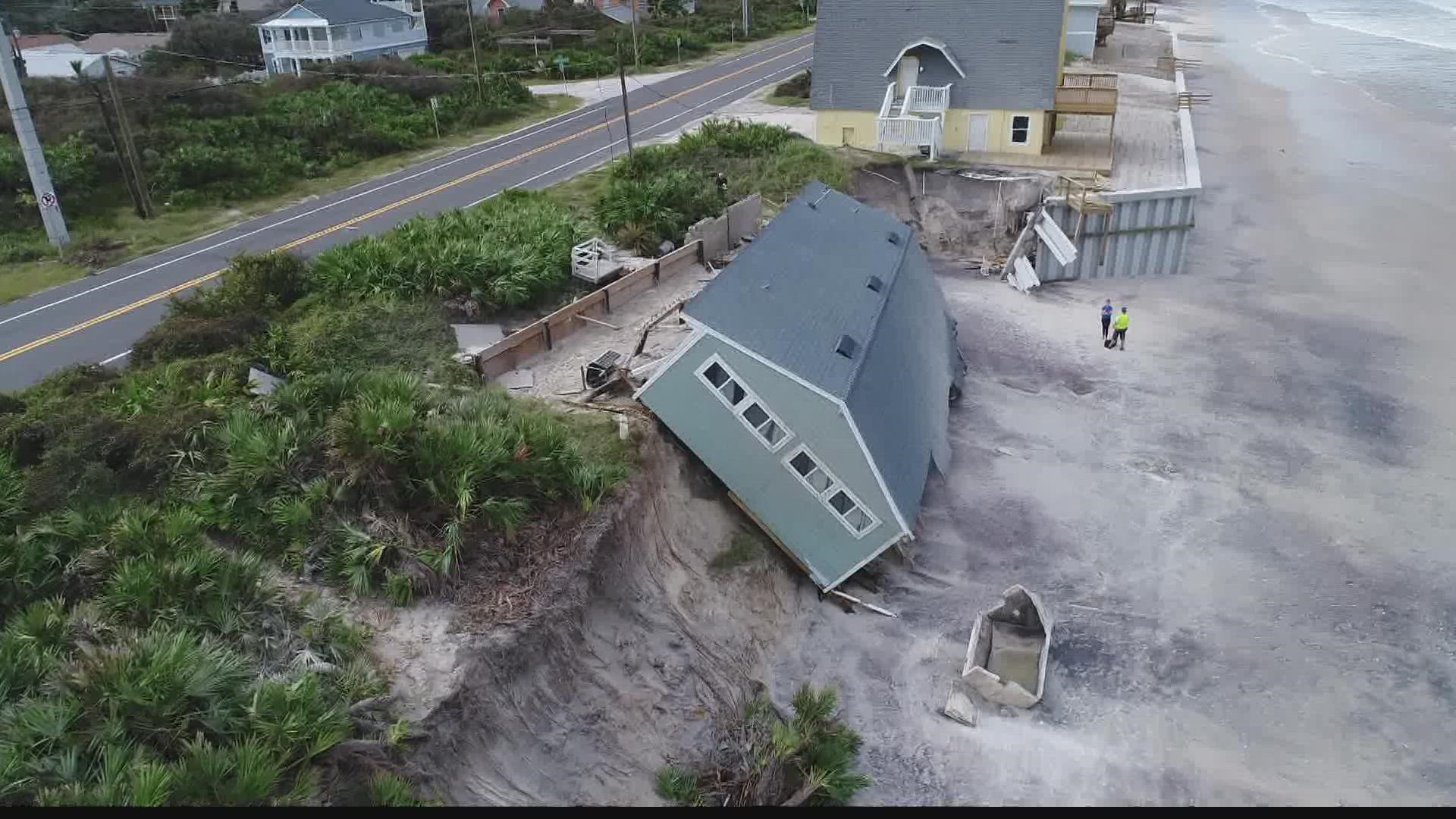JACKSONVILLE, Fla. — We are now at the peak of Hurricane season but also a somber anniversary in the tropics. It’s been five years since Hurricane Irma moved over the state of Florida. It brought wide spread flooding across the First Coast, tornadoes and hurricane force winds to the sunshine state.
But even before hitting Florida the storm already had a long track. It was the strongest storm to ever hit the Leeward islands. It was also the strongest storm on record in the Atlantic basin until Hurricane Dorian and for 37 straight hours it produced 185mph winds. An all time record.


In Florida the storm made landfall as a Category 4 Hurricane but weakened to a tropical storm over the First Coast. Weakened does not mean it was weak though.
Ahead of Irma a nor'easter already backed up our rivers and inlets and then when the storm arrived it ushered heavy rainfall creating historic flooding. This includes on the Saint Johns river where multiple record flood stages were set.
"The St. John’s River set record flood stages at many locations in Duval County, causing major flooding in the Jacksonville metropolitan area, where hundreds of people were rescued," according to the National Hurricane Center's Tropical Cyclone Report on Irma. "Similar flooding occurred in Bradford County where record flood stages were set at Alligator Creek, Hampton Lake, Lake Sampson, and New River."


Some people who experienced the storm said the flood waters came in fast and gave people who were in the area little time to prepare. The water rushed into the city's streets reaching 5 feet deep in some locations.
The report goes on to explain, "The [gauge] at the I-295 bridge on the south side of Jacksonville measured a peak water level of 5.3 ft. MHHW, while gauges at Southbank Riverwalk in Downtown Jacksonville and at Racy Point recorded peak water levels of 4.9 ft. MHHW and 4.0 ft. MHHW, respectively."
Separately as Irma moved across the state of Florida it produced 21 tornadoes, an additional 4 were also reported in South Carolina. This includes a tornado that hit St. Augustine causing damage to several homes.
The previously mentioned reported stated. "Irma produced 25 confirmed tornadoes: 21 in Florida and 4 in South Carolina (Fig 13). Of the tornadoes, 3 were EF-2 (on the Enhanced Fujita Scale), 15 were EF-1, and 7 EF-0. The majority of the tornadoes occurred along the east coast of central and northern Florida. An EF-1 tornado affected St. Augustine causing significant damage to a cemetery "


Overall It made a total of seven landfalls across the Caribbean and the United States resulted in a total of 134 deaths and caused over 70 billion dollars in damages.
Landfalls of Irma
- September 6: Landfall on Barbuda
- September 6: Landfall on St. Martin
- September 6: Landfall on Virgin Gorda, British Virgin Islands
- September 8: Landfall on Little Inagua, Bahamas
- September 9: Landfall near Cayo Romano, Cuba
- September 10: Landfall on Cudjoe Key, FL (the first major hurricane to hit Florida since Hurricane Wilma in 2005)
- September 11: Landfall near Marco Island, FL
- 2:00 a.m. Irma passes between Tampa and Orlando as a category 1 storm
- 8:00 a.m. Irma "weakens" to a tropical storm about 20 miles west of Gainesville
- 2:00 p.m. The storm's center moves over south Georgia just west of Valdosta.

